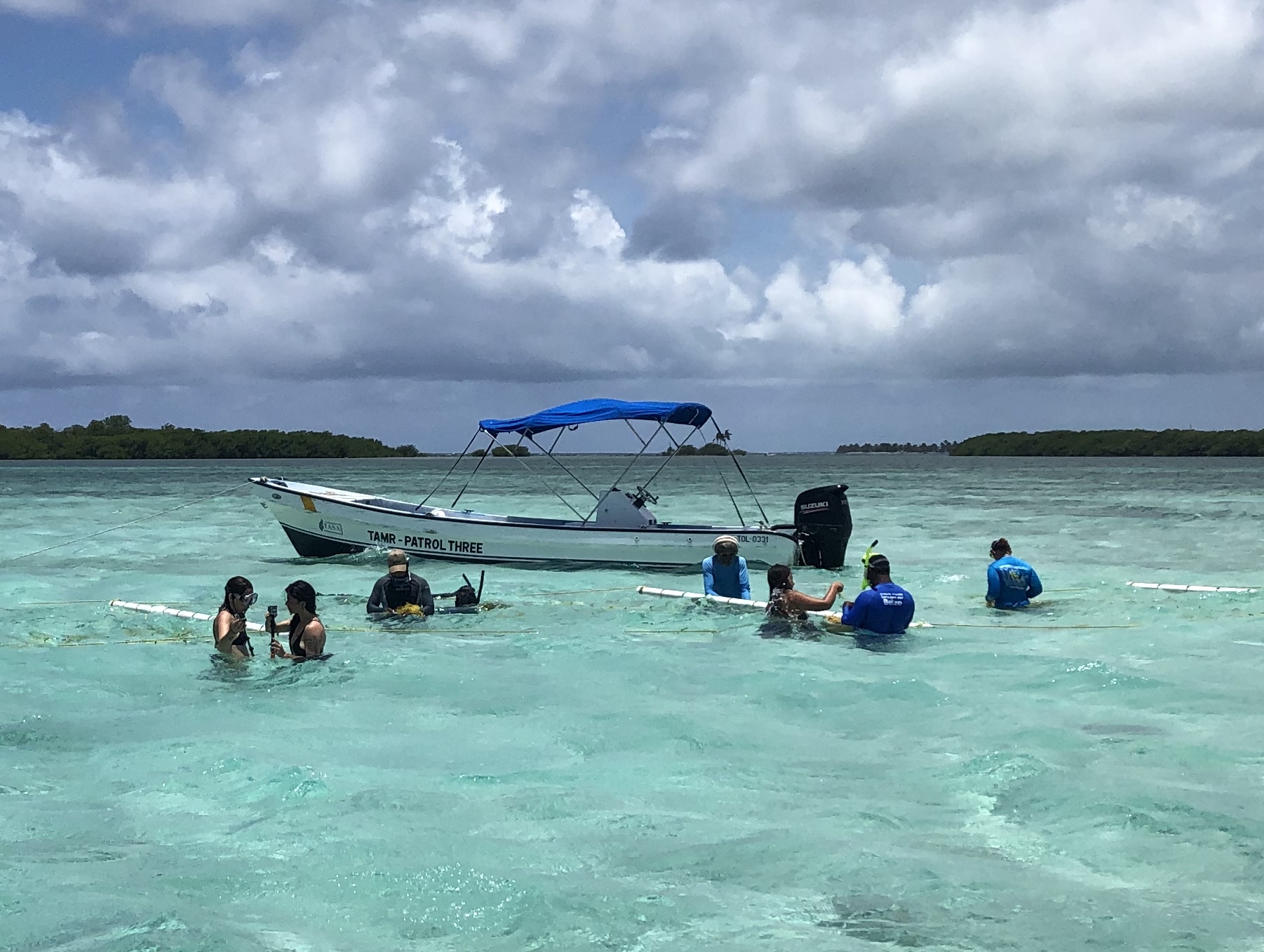Seaweed farm in AF-funded Marine Conservation and Climate Adaptation Project in Belize implemented by World Bank. (Photo by NYFA-LA)
Adaptation Fund Reaccreditations of World Bank and Asian Development Bank Help Unlock More Options for Climate-Vulnerable Countries
Washington, D.C. (July 14, 2023) — The World Bank (The International Bank for Reconstruction and Development) and Asian Development Bank, two multilateral implementing entities (MIEs) of the Adaptation Fund (AF), achieved reaccreditations with the Fund in June, improving and expanding access to climate finance for developing countries across the globe.
The World Bank, the largest development bank in the world aimed at poverty reduction and sustainable growth for 189 countries, was first accredited in 2010 and reaccredited in 2015 before being reaccredited a second time on June 6.
The new reaccreditation will help open access to climate finance to the more than 100 developing countries that are eligible for AF funding but do not yet have a national implementing entity (NIE) under the Fund’s pioneering Direct Access modality which fosters country ownership in adaptation.
Likewise, the reaccreditation of the Asian Development Bank (ADB), the largest development bank in the Asia Pacific region with 68 member countries dedicated to a prosperous, inclusive, resilient and sustainable society while aiming to eradicate extreme poverty, will open up access to AF funding to more Asia Pacific countries that do not yet have NIEs. It is crucial for a region that is home to a large share of the world’s poor: 263 million people living on less than $1.90 a day and 1.1 billion on less than $3.20.
ADB’s reaccreditation on June 21 also marked its 3rd overall accreditation with the Fund. It was originally accredited in 2010, and first reaccredited in 2015.
Each accreditation is valid for five years before entities go through a reaccreditation process to ensure policies are aligned with updated AF standards and procedures.
“Both the World Bank and Asian Development Bank bring many years of relevant development expertise in the climate field, and will open up more opportunities for developing countries that do not yet have an NIE to access Adaptation Fund resources,” said Mikko Ollikainen, Head of the Adaptation Fund. “These reaccreditations renew our agreements and partnerships with them, and we are looking forward to working with them to program resources for more developing countries.”
Currently, the Fund has 55 total implementing entities: 32 NIEs, 14 MIEs and 9 regional implementing entities (RIEs) accredited with the capability to identify, implement and manage adaptation projects. Of those, 36 have been reaccredited overall, comprising 19 NIEs, 11 MIEs and 6 RIEs, further reinforcing long-term commitments to the Fund.
To date, the Adaptation Fund has committed more than US$ 1 billion for adaptation and resilience programs, including 150 concrete, localized projects in vulnerable communities of developing countries around the world with over 38 million total beneficiaries.
The World Bank previously implemented two projects funded by AF, one in Argentina and one in Belize. Some Bank country teams also contacted the Fund recently showing interest in developing new project proposals. Meanwhile, the Asian Development Bank is excited to renew its work with the Fund.
“The Asian Development Bank is grateful for its reaccreditation with the Adaptation Fund. As Asia and the Pacific’s climate bank, this reaffirms our commitment and validates our leadership in driving climate action and building resilience in the region,” said Noelle OBrien, ADB’s Director of Climate Change. “This accreditation will help us to further support our developing member countries pursue their adaptation priorities and deliver impactful and transformational adaptation projects that will benefit the most vulnerable communities.”
According to OBrien, accessing AF funding will also be instrumental for ADB to achieve its international climate finance goals, which includes US$ 34 billion for adaptation and resilience by 2030. “We are energized to collaborate with partners and ramp up our climate adaptation programs. Together we can make progress toward a more resilient future,” OBrien said.
OBrien added that AF provides many opportunities to help ADB pursue new areas in their adaptation portfolio. “For example, resources from the AF can help our developing member countries implement the Community Resilience Partnership Program, which is a 10-year program aimed to scale up community level adaptation investments explicitly targeting solutions addressing the nexus between climate change, poverty, and gender,” she said. “Another example will be to closely partner with AF at the upstream level to expand ADB’s work in helping our developing member countries strengthen adaptation investment planning processes for priority sectors such as agriculture and water. This will enable countries to apply a programmatic approach to identifying a portfolio of priority adaptation investments for implementation and mobilizing resources from a range of sources, including AF and multilateral development banks such as ADB.”
Attachments
| Attachment | Type | Size |
|---|---|---|
| Press-Release, July 13, 2023 | 172 KB |


